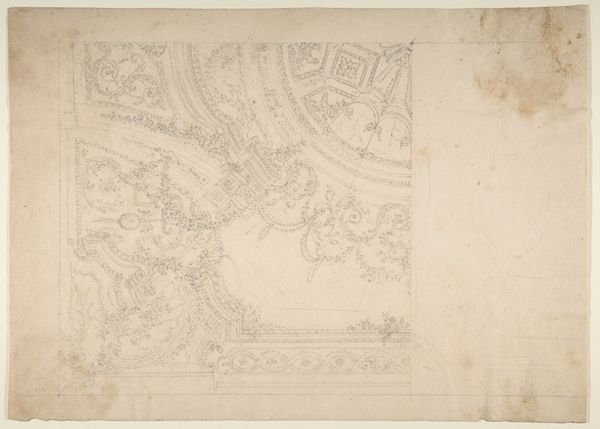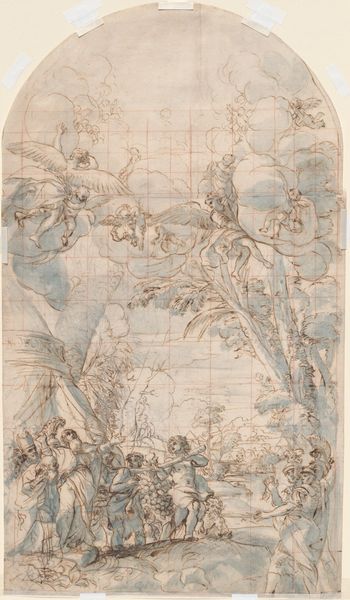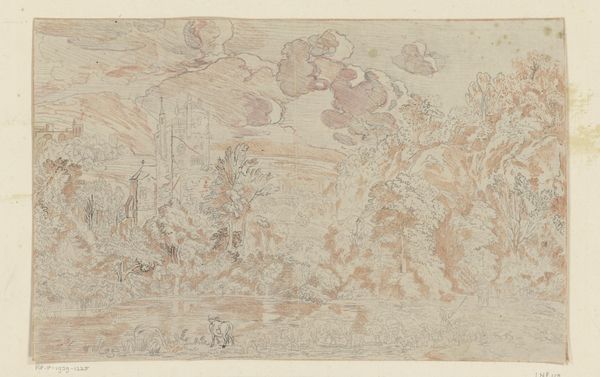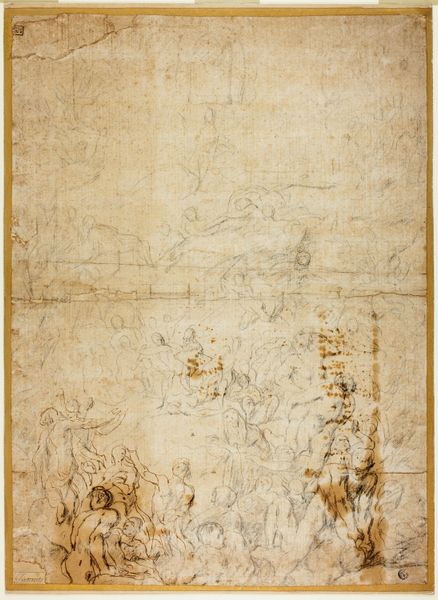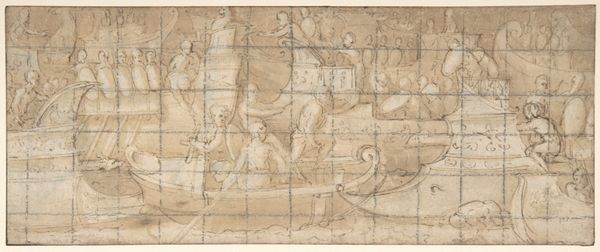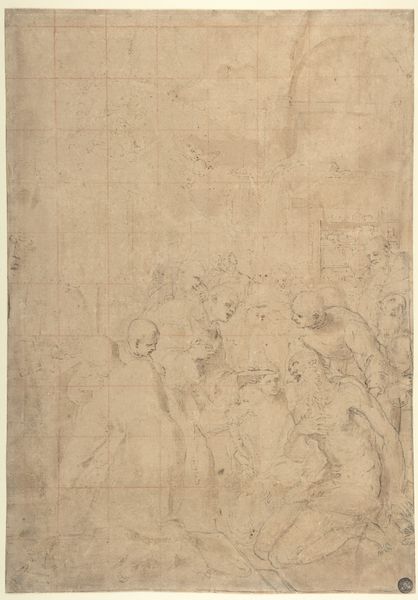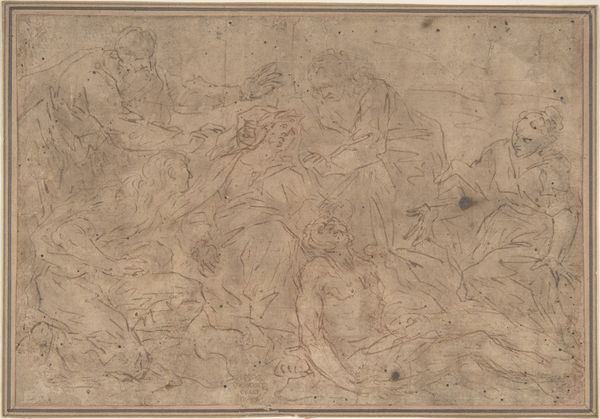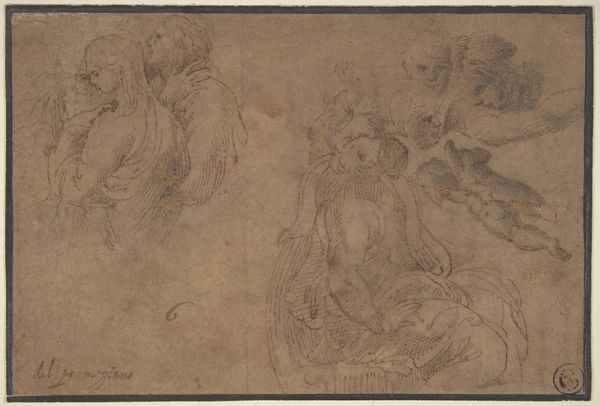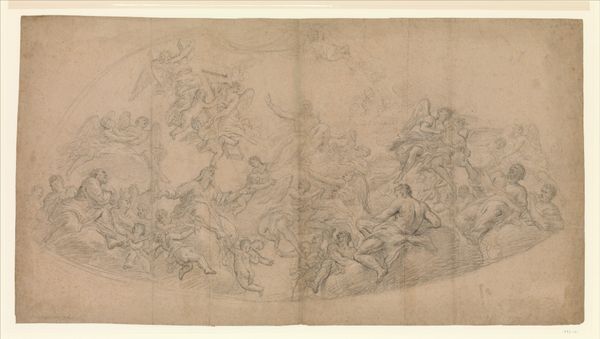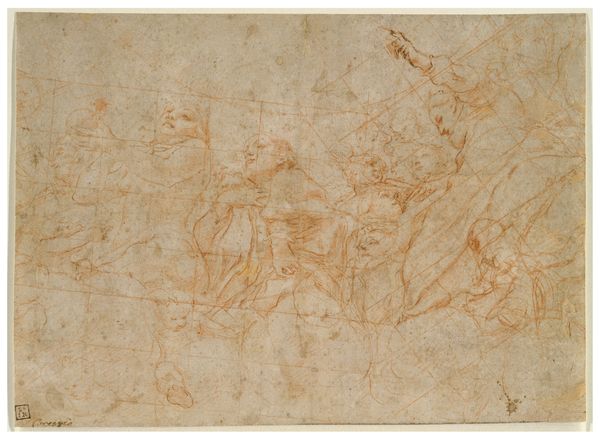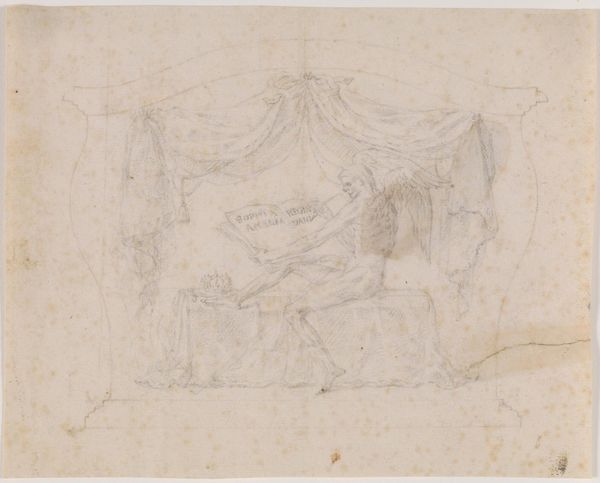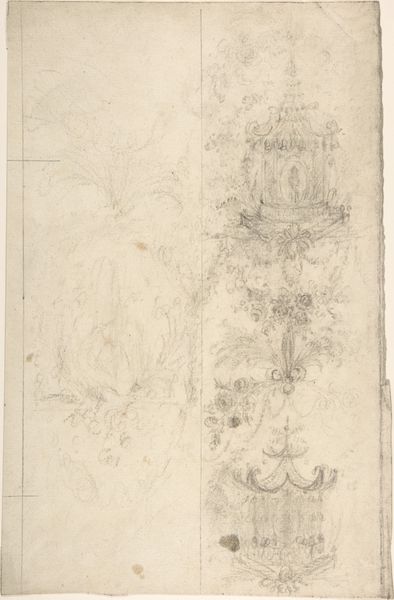
The apostles around the tomb of the Virgin for the lower part of an Assumption 1622 - 1682
0:00
0:00
drawing, paper, pen
#
portrait
#
drawing
#
toned paper
#
water colours
#
figuration
#
paper
#
pen
#
history-painting
#
italian-renaissance
Dimensions: 257 mm (height) x 319 mm (width) (bladmaal)
Curator: Welcome. We’re standing before a preparatory drawing titled "The Apostles around the Tomb of the Virgin for the lower part of an Assumption" by Carlo Cesio, dating from somewhere between 1622 and 1682. It's currently held in the Statens Museum for Kunst. The piece uses pen, watercolours, and various tonal papers. Editor: My initial impression is of muted grief. The russet tones and visible grid give it a rawness, an immediacy. It feels less like a finished artwork and more like a glimpse into the artist's process. The poses, particularly the slumped figures around the tomb, really convey the despondency of loss. Curator: Precisely. Cesio's piece presents a study of religious and social narratives from the Italian Renaissance. Given its designation, this drawing served as a crucial step in visualizing and then cementing the story of the Assumption of Mary for wider audiences. The postures that convey these sentiments underscore its cultural significance. What were acceptable behaviors, expressions for various demographic figures during this period, and does the art piece meet, subvert, or fail these social expectations? Editor: And I'd say that the social element extends beyond the religious narrative. The commission itself reflects the power dynamics of the art world. Someone with means saw value in this, in disseminating this story and supporting artists like Cesio, contributing to shaping public morality through imagery. What choices did Cesio make regarding whose suffering is centered or visible in the frame? How are we as an audience expected to situate ourselves morally when viewing? Curator: Those are critical observations about both its explicit and implicit public role. It's worthwhile thinking about how the art market shapes and is shaped by prevailing political forces. Editor: Agreed. Reflecting on this work, it is impossible to disentangle individual artistry from broader institutional contexts. Curator: Indeed. It challenges the viewer to confront art's embeddedness within structures of patronage and societal influence.
Comments
No comments
Be the first to comment and join the conversation on the ultimate creative platform.
